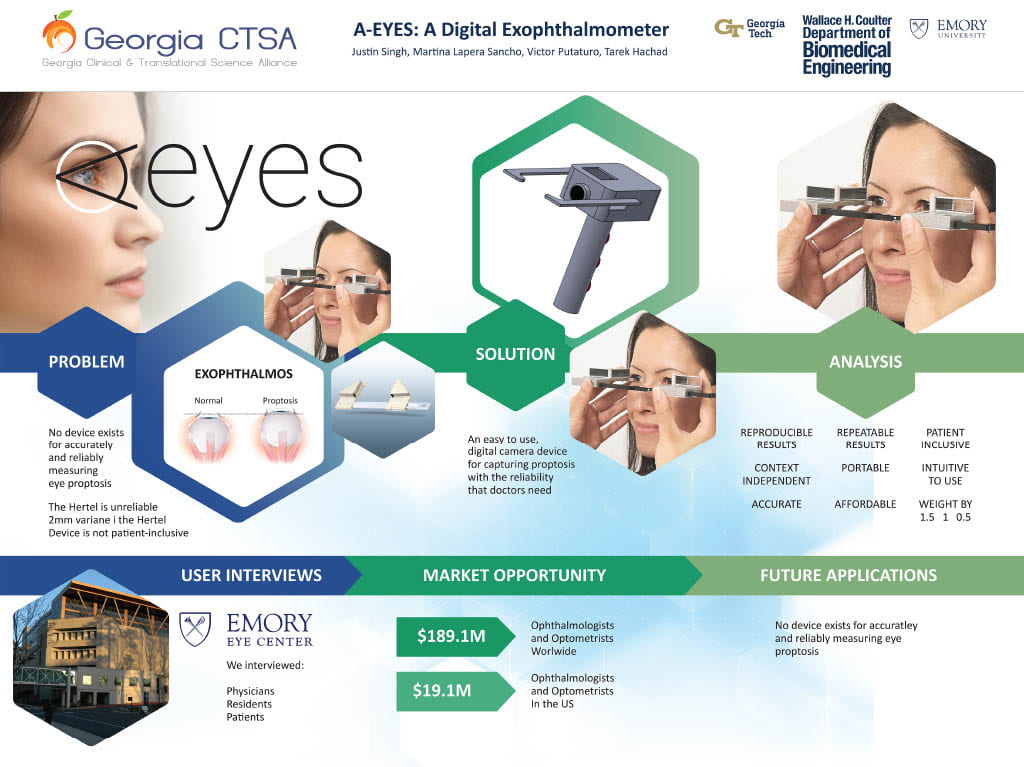Get to know our team on LinkedIn:
Noah Kramer, Martina Lapera Sancho, Justin Singh, Tarek Hachad, Victor Putaturo
A-eyes
Digital Exophthalmometer for Measuring Eye Proptosis
Project Description
Proptosis, also known as exophthalmos, is described as the forward protrusion, i.e. “bulging”, of the eyeball caused by a wide variety of ocular conditions. Measuring proptosis is essential for the diagnosis and management of patients experiencing these pathologies. An exophthalmometer is the most common instrument used to measure proptosis, and it is designed to obtain the distance between the lateral orbital rim and the apex of the cornea. However, it is a tool that produces a measurement variability range larger than the accepted normal difference of 2 mm. This, along with the variability that also exists within the measurements of a single user, greatly affects the sensitivity and specificity of the device in determining the presence of relevant asymmetry or change in a patient, especially in academic hospitals where they are seen by a different clinician in most follow-up visits. Ultimately, this can lead to patients receiving unnecessary treatment and financial burden, or worse, delaying diagnosis and treatment of an active disease. Therefore, this project intends to create a user-and-context independent exophthalmometry instrument with improved precision that can reliably measure and track proptosis in patients with orbital disease.



